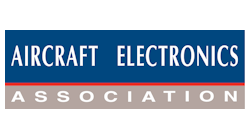Avionics Industry Ready to Meet ADS-B Mandate
On June 11, I had the opportunity to testify before the U.S. House Small Business Committee in Washington, D.C. Chaired by Rep. Sam Graves (R-Mo.), the hearing titled, “FAA’s 2020 NextGen Mandate: Benefits and Challenges for General Aviation,” examined the benefits of the 2020 ADS-B Out mandate to the general aviation industry, challenges it may face in compliance with the mandate and the importance of incentivizing and ensuring widespread adoption.
In my congressional testimony, I made it clear that the certified repair station industry currently has the capacity to perform ADS-B installations at a rate necessary for the expected 160,000-plus general aviation aircraft to comply with the ADS-B Out mandate by Jan. 1, 2020. Demand is expected to increase as the deadline nears, and AEA members indicate they will begin expanding their installation capacity in order to keep up with new demand. A recent survey of AEA members indicated that in order to meet this new demand, more than 75 percent of the 700 FAA-certified U.S. repair stations will expand and hire more employees – this is job creation!
However, general aviation aircraft owners are “on the clock” as ADS-B installation capacity today far exceeds aircraft owner demand. This inverse relationship will not last unless the industry immediately begins to see 100 or more installs completed per day – a 25-fold increase over the current installation rate.
Therefore, as the clock continues to tick toward 2020, my message to Congress was simple: the Federal Aviation Administration leadership needs to refocus its efforts for a more rapid adoption of the safety-enhancing NextGen technologies in which it has invested so heavily. Specifically, this can be done in three ways:
- The FAA must make an effort to incentivize aircraft owners by immediately signing the loan guarantee certificate for the NextGen GA Fund.
- The FAA must streamline the certification process and field approvals to produce efficiencies in ADS-B installations.
- The FAA must restore aircraft owners’ confidence that the Jan. 1, 2020, deadline won’t be extended.
Since the ADS-B Out mandate first became a rule in 2010, the AEA has been working with our constituents to educate them, inform them of progress, and how to best comply with the mandate. The AEA has promoted the recently announced financing program, the NextGen GA Fund. The NextGen GA Fund was designed to take advantage of the public-private partnership funding authorized by Congress in the 2012 FAA Reauthorization Bill, to create an incentive for operators of aircraft to take advantage of low-interest, government-backed loans to buy the necessary equipment in order to comply with the mandate. While there may be an ongoing debate regarding the fund, the lack of the FAA’s willingness to embrace the fund is a testimony to the “can’t-do” attitude the agency has exhibited during the past decade.
Yet despite industrywide efforts to promote early equipage, the FAA is dragging its feet on the incentive program by not signing the loan guarantee certificate. Until the FAA issues the loan guarantee certificates, nothing moves on this program. Keep in mind, the monies raised for financing these loans are from private investors. Our industry is not asking for government money; we are only asking for the FAA to immediately issue the loan guarantee certificates – as it was directed by Congress to do so. But today, we sit in limbo waiting for the FAA to take action on this program, making it more difficult for industry to comply with the mandate.
For those operators and aircraft owners who have decided to equip now, the FAA is still a constraint. For example, we have an AEA member company in Las Vegas that supports a helicopter fleet operator wanting to equip a fleet of 90 helicopters. It currently has the correct ADS-B equipment installed. But because the aircraft has not been FAA “approved” for ADS-B operations, the system can’t be turned on. So the penalty for this operator – who is willingly following the law by equipping for ADS-B operations – is experiencing six months of costly administrative burden and an additional cost of approximately $30,000 in certification fees. Despite the fact that the FAA employs thousands of very talented engineers, the 160,000 general aviation aircraft needing an upgrade must pass through a couple of project managers in Washington. This is not practical or prudent. It is imperative the FAA streamline its certification process to produce efficiencies in ADS-B installations.
The FAA also has a history of not implementing rules on time. I cannot remember one avionics mandate in the last five decades that was implemented without an extension. These extensions have created a public perception that the FAA will, once again, allow another exception, creating the potential for a serious backlog as the 2020 deadline nears. Rumors are swirling that the mandate will be extended, or new and cheaper technology will miraculously be introduced at the very last moment. All these rumors and mis-truths create a very confused consumer.
In my testimony to Congress, I asked the FAA to make a more public commitment that an extension will not occur this time around. As a result, I was pleased when a few days later on June 25, Michael Whitaker, FAA deputy administrator and the FAA’s chief NextGen officer, testified to a Senate subcommittee on aviation with a warning to procrastinators. In Whitaker’s testimony, he said, “Let me be very clear – the 2020 deadline is not going to change.” This message was a welcomed first step, but we must continue to see similar public commitments from FAA leadership that the deadline will not be extended.
I look forward to working with FAA officials and congressional leaders to help ensure the industry maintains its ability to equip the general aviation fleet by New Year’s Day in 2020. While it’s a little more than five years away and sounds like a long time, the deadline will arrive sooner than you think.
With more than 160,000 general aviation airplanes to equip by the deadline, the capacity for repair stations to meet the U.S. installation demand is shrinking each day. I urge pilots and aircraft owners to discuss plans for installation with a repair shop as soon as possible in order to avoid the backlog that procrastinators are bound to experience. An AEA member shop is ready to help aircraft owners determine the most efficient and cost-effective compliance plan. Aircraft owners can find a government-certified repair shop by searching the AEA’s online member directory located at www.aea.net.
It’s widely noted that change is hard to accept; yes, change can be difficult at times. But it will take all of us in the general aviation industry, including FAA staff members throughout the agency, to maintain a safe and efficient air transportation system. Simply put, the technological advancements of NextGen will allow the U.S. to remain the air transportation leader in the world.


